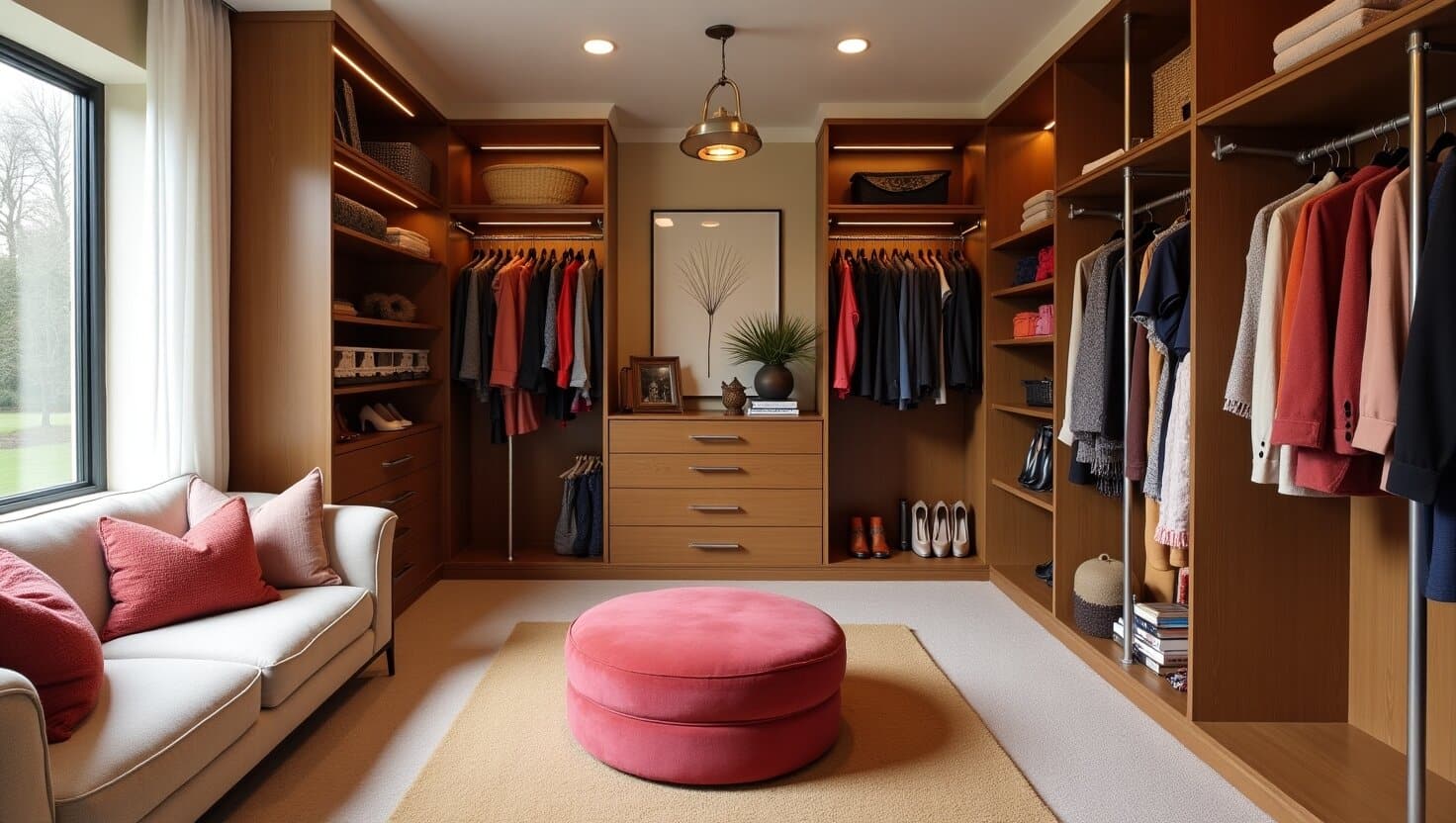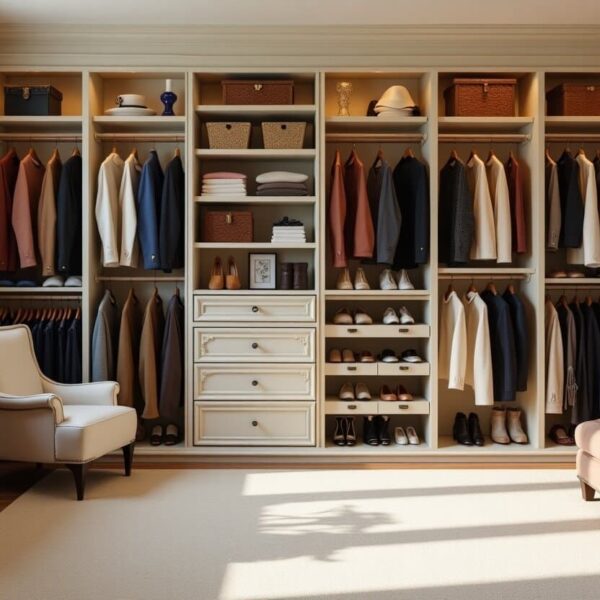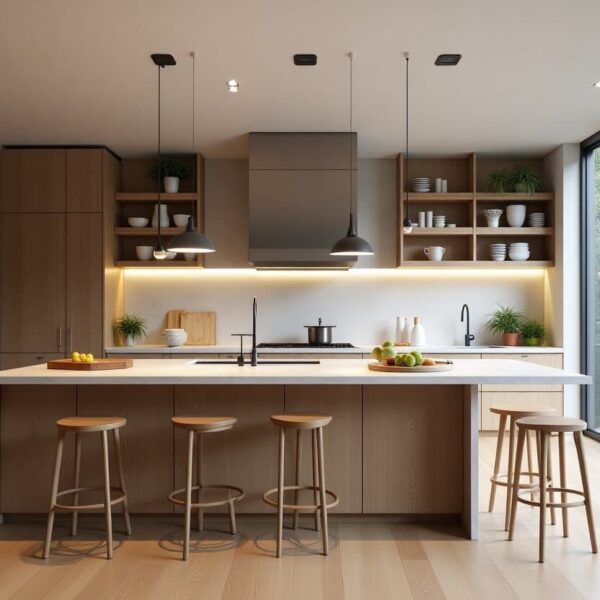When it comes to ordering a custom wardrobe, excitement often overshadows precision. Many overseas homeowners dream of having a beautiful wardrobe tailored exactly to their space—but without proper measurements and clear drawings, that dream can easily go wrong.Whether you’re sourcing custom wardrobes from China or working with a Chinese custom wardrobe maker, accurate dimensions are the first and most important guarantee of functionality, aesthetics, and a hassle-free installation.
This blog post is your ultimate guide to ensuring your custom wardrobe from China fits perfectly into your home, both aesthetically and functionally. We’ll dive deep into common measurement pitfalls, how to understand wardrobe drawings, and most importantly, how to measure and annotate like a pro.
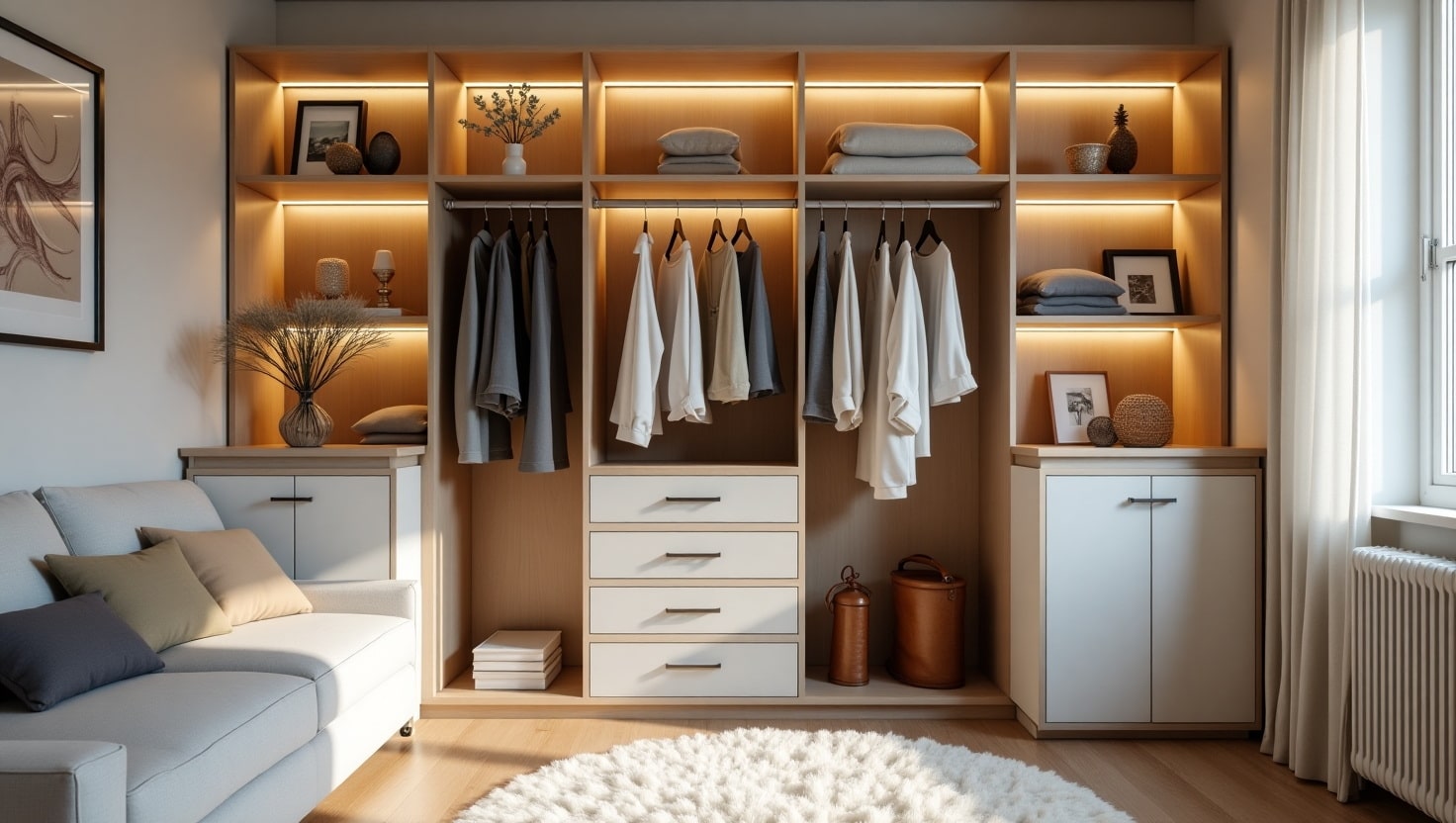
Why Measurements Matter?
Many people often underestimate the complexity of measurement when customizing wardrobes, thinking it’s just a matter of “measuring length, width, and height.” However, it’s these often-overlooked details that ultimately lead to installation difficulties, wasted space, and even costly rework. Your custom wardrobe should seamlessly integrate into your home, not create headaches.
Common sizing errors often stem from ignoring inherent room structural imperfections. Have you meticulously checked the verticality of your walls? A difference of more than 2cm (approx. 0.8 inches) in width between the top and bottom is common, which can lead to awkward gaps between your custom wardrobe from China and the wall. Furthermore, if the height and position of skirting boards and electrical outlets aren’t accurately recorded, your new custom wardrobe might not sit flush against the wall. And don’t forget that sloping ceilings or special architectural features like beams and columns within the room might directly impact the wardrobe’s height and overall design; these are worth considering thoroughly during measurement.
Unit confusion and calculation errors are also frequent pitfalls. Mixing up millimeters with centimeters, or inches with centimeters, or even minor discrepancies during manual recording and calculation can lead to major headaches. More importantly, dynamic factors are often overlooked. Even high-quality solid wood or engineered boards will slightly deform with changes in temperature and humidity. Failing to allow space expansion can lead to jammed doors or cracked panels. What’s more, measuring only once during the rough construction phase might not be enough. Dimensions can subtly change after renovation, so re-verifying measurements would be a good idea, especially before your custom wardrobe is installed.
Finally, overlooking design details can also cause issues. Forgetting to specify the internal depth of drawers, the spacing between shelves, or not allocating enough space for door swings can significantly impact the wardrobe’s daily usability. Simply assuming “you only need to measure length, width, and height” undoubtedly underestimates the complexity of a custom wardrobe; it involves many intricate design and installation considerations, which is precisely what a professional Chinese custom wardrobe maker can help you with.
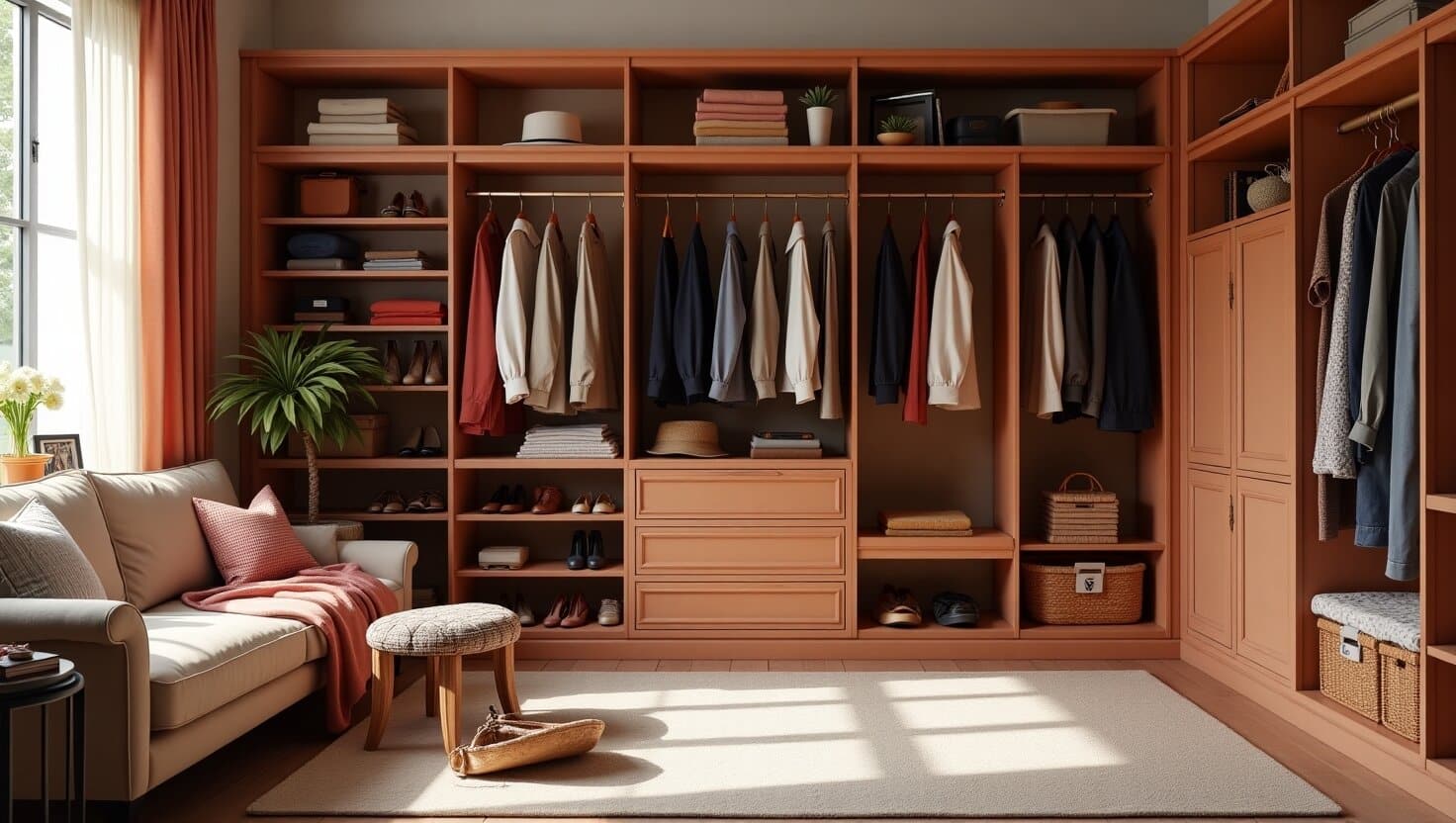
Understanding Wardrobe Drawings
To smoothly communicate your design intent to a Chinese custom wardrobe maker, understanding the fundamental concepts within wardrobe blueprints is a crucial first step. Learning to read and annotate these drawings can help you avoid costly rework due to communication errors and ensure your custom wardrobe from China is delivered exactly as you envisioned.
You’ll typically encounter a few types of dimensions. The Cabinet Finished Size refers to the actual external dimensions of the wardrobe once you receive and assemble it. The Wall-to-wall size, on the other hand, is the precise distance between the walls in your room. Beyond these, you’ll also need to consider Installation Clearance, which is the necessary gap that can be left between the wardrobe and the walls, ceiling, and floor. We generally suggest allowing for a 10–20mm (approximately 0.4–0.8 inches) gap. This space allows the manufacturer to install edge banding or filler strips, helping ensure a perfect, flush fit.
Blueprints will also indicate key dimension types, including Overall Dimensions (Total Width × Total Height × Total Depth). You’ll also find Internal Structure Dimensions, covering the specific measurements for each internal function like hanging areas, drawers, shelves, and accessory zones. Lastly, Clearance Dimensions are equally vital. These include details such as door opening ranges, drawer pull-out distances, and skirting board allowances—all crucial elements that contribute to your custom wardrobe’s seamless operation.
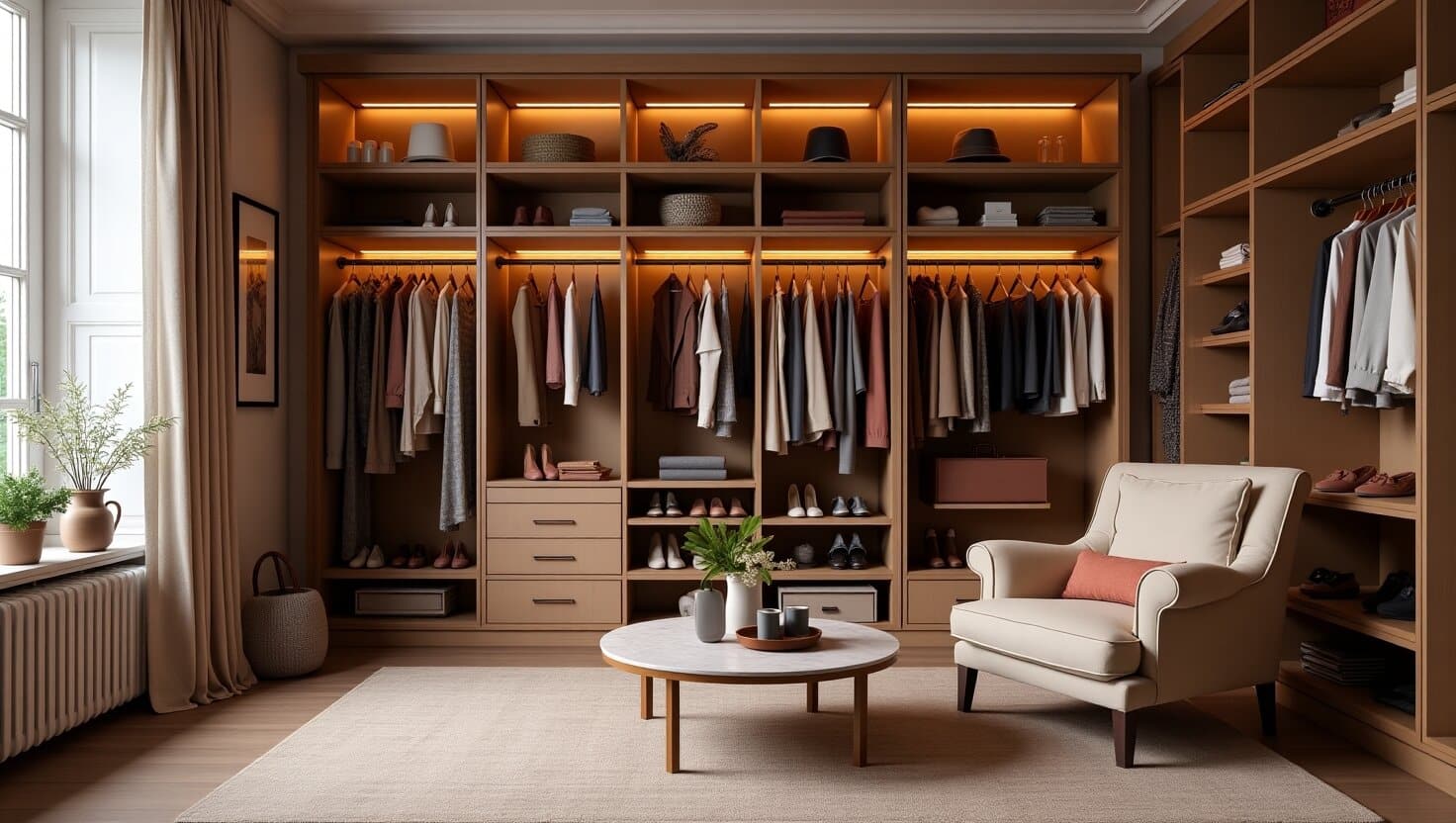
Core Measurement Steps
If there’s one thing you absolutely can’t skip when planning a custom wardrobe from China, it’s measuring—properly。Not just a quick length–width–height and calling it a day, but really taking the time to understand your space. Walls aren’t always straight. Floors aren’t always level. And your future wardrobe needs to work with all that—not against it.
Take width, for example. Measuring once across the middle of the wall isn’t enough—you’ll want to measure at the top, middle, and bottom. Why?Because walls can curve inward or bulge slightly, especially in older homes. It’s usually best to go with the smallest number you find—that way, your wardrobe won’t end up too tight to install. When you write down your measurements, be specific。For instance:“Top width: 2500mm, Middle: 2495mm, Bottom: 2505mm.” That kind of detail helps avoid confusion later on, especially when you’re working with a factory that’s not in the same country.
Height is the same story. Don’t assume your ceiling is flat—measure on the left, in the center, and on the right. Again, use the smallest number. And don’t forget things like baseboards or crown moldings. You’ll need to decide whether the wardrobe will sit on top of those or go around them—it makes a difference, both visually and practically.
And then there’s depth. Often overlooked, but super important—especially if your wardrobe will go in a hallway or a tighter room. Measure from the back wall to the furthest point that might block the cabinet—like a window frame, corner, or even a light switch. If your wardrobe includes drawers or sliding doors, you need to know they’ll open all the way without bumping into anything. For clothes hanging space, 550 to 600mm is usually a good depth—it gives hangers and jackets enough room without getting caught by the doors. If space is tight, adjust accordingly.
In the end, careful measuring just makes everything easier. It saves time, avoids surprises, and sets you up for a wardrobe that actually fits—not just on paper, but in real life. When you’re working with a Chinese custom wardrobe maker, clear dimensions make it much easier to get what you really want.
Have a project in mind? Send a message.
Get the catalog for free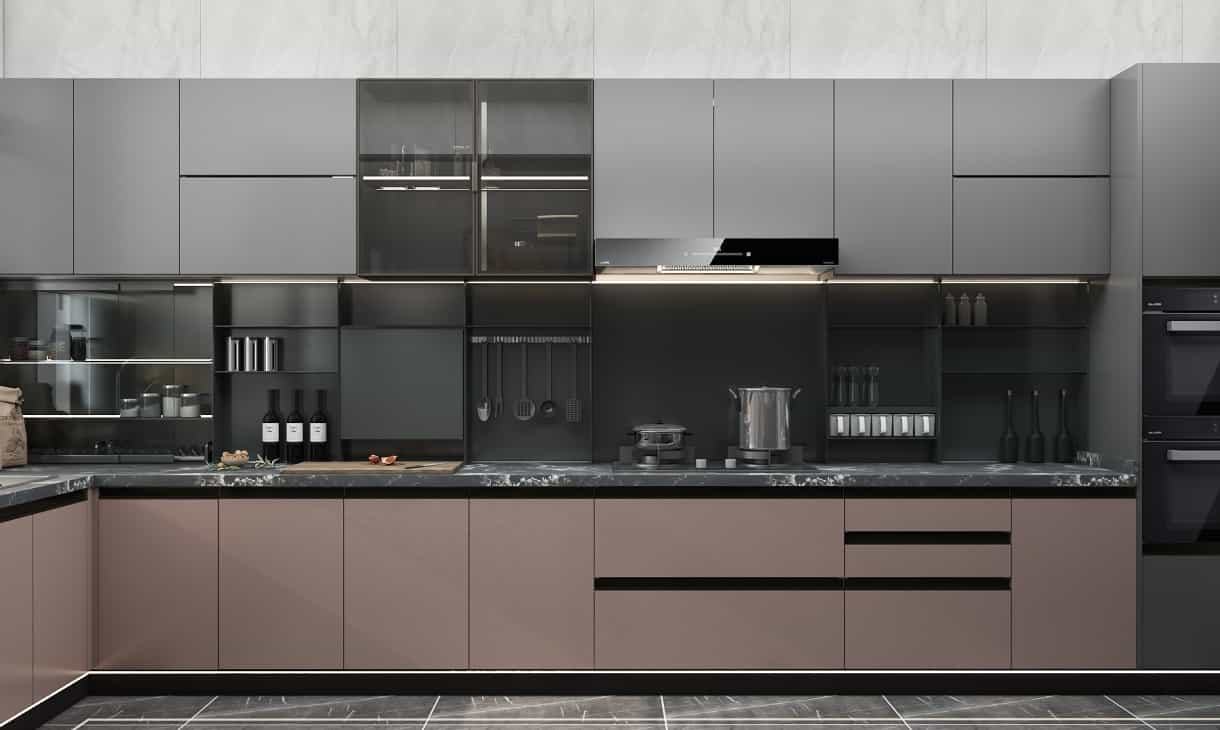
How to Annotate Your Custom Wardrobe Drawing?
Once your measurements are solid, the next big step is putting everything clearly into your drawings. This might seem like a formality—but in reality, it’s one of the most important things you’ll do before placing an order with a Chinese custom wardrobe maker. Your annotated drawings aren’t just technical documents—they’re the bridge between your design ideas and what actually gets built.
The best way to start is with elevation or sectional views—these give a clear visual of how everything will be arranged. Use a standard scale like 1:20 or 1:10, and show both the front and side views if possible. Make sure the outlines of the wardrobe structure are clearly drawn. Labeling each shelf or drawer compartment separately might feel tedious, but it helps avoid guesswork later on.
It’s essential to include the wardrobe’s overall size—that means the total width, height, and depth. Stick to one unit throughout the drawing (millimeters or inches, don’t mix). If the wardrobe is wall-to-wall, you can also note whether the walls are straight — this helps the factory decide if adjustments are needed. If there are beams, skirting boards, or decorative molding, show them in the drawing. That way, the final product can be shaped to fit without surprises on installation day.
Inside the wardrobe, clearly lay out the functional zones. Long hanging, short hanging, shelves, drawers—each section should have its purpose and spacing marked. A few common references: short hanging rods usually sit around 1000mm, long hanging between 1300–1500mm, and drawer heights range from 120–180mm. Connecting each section with simple dimension lines avoids clutter and makes things easy to read.
If your design includes doors, their details matter too. Mark the type of door (swing, sliding, or bifold), as well as the width, thickness, handle position, and how far they’ll open. If you’re using mirror doors or special finishes, add a note. Hardware like pull-out baskets, trouser racks, or jewelry trays should also be marked with their exact position and height. You can indicate whether shelves are adjustable or fixed—this helps manage expectations later.
And then there are the installation gaps. It’s common to leave a 10–15mm buffer between the cabinet and the wall or ceiling to account for irregularities or make room for filler panels. If you know your walls or floors aren’t perfectly level, it’s okay to mention that adjustments will be needed during installation. These little notes might seem minor, but they help keep your custom wardrobe from China aligned with your real-world conditions.
And one last tip—keep your annotations clean. Use consistent arrows, avoid overlapping lines, and add short notes like “removable shelf” or “adjustable height” when needed. It doesn’t have to be architectural-drawing perfect, but clarity always wins.
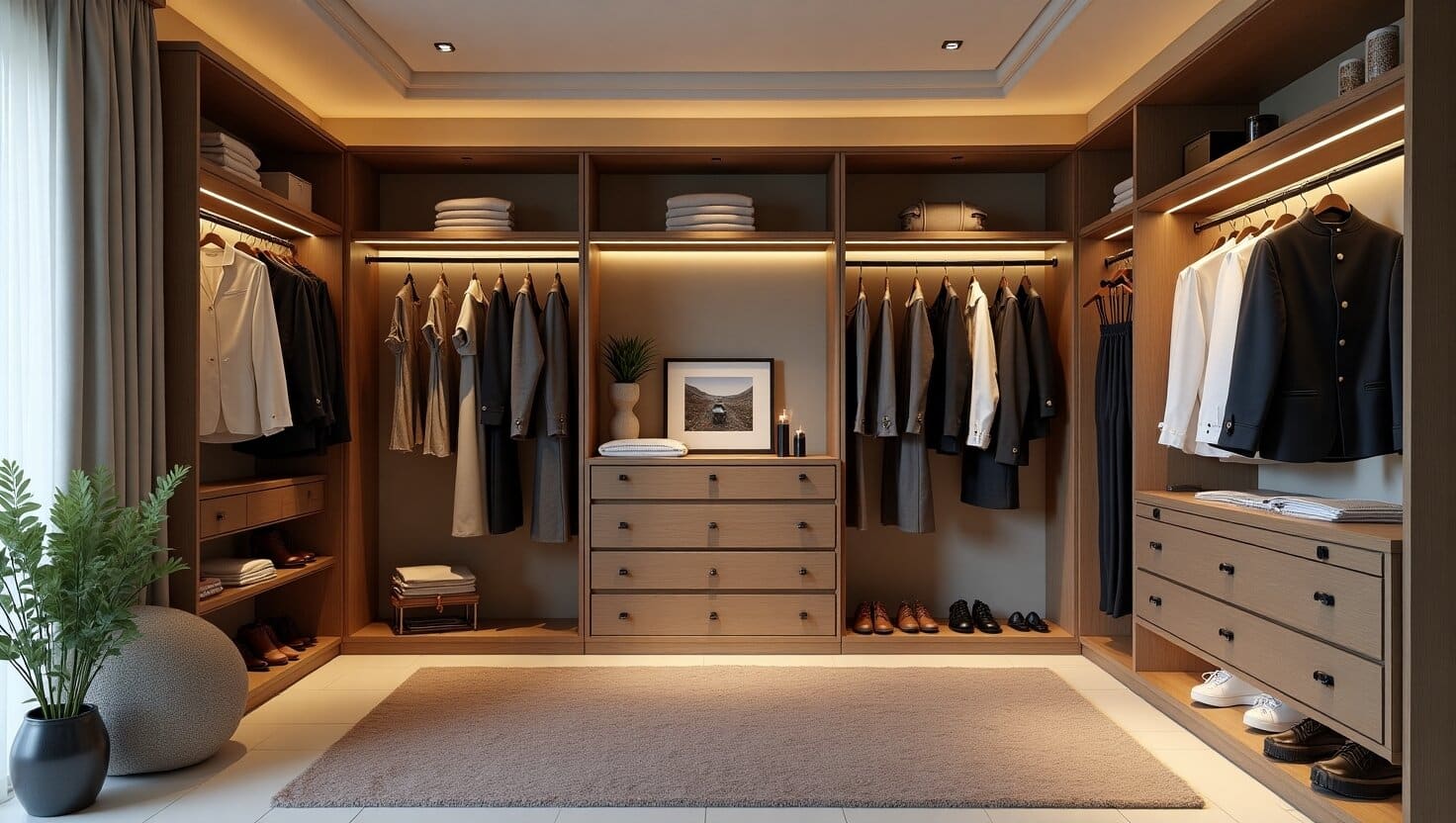
Practical Tips
For a custom wardrobe from China, accurate measurement is just the beginning. Achieving a perfect installation also requires systematic methods, appropriate tools, and a proactive awareness for contingencies. We recommend using a “three-step measurement method.” First, measure the overall room dimensions, including length, width, height, and diagonals; this can help you determine if the room is square. Second, carefully mark all potential obstructions that might affect wardrobe installation, such as electrical outlets, windows, pipes, and radiators, and record their precise dimensions and locations. Finally, during the data verification stage, following a “two-person verification” principle, where another person double-checks your measurements, can significantly reduce errors.
When it comes to tools, you might find downloading a measurement checklist PDF very practical, as it helps ensure you don’t miss any details. Additionally, using wood shims or a spirit level can help you address tilting issues. In some specific situations, you might need to cut shelves on-site to adapt to irregular spaces.
We also suggest allowing for some “error margin,” such as an extra 0.5 inches or 10-15 millimeters of space, to account for uneven walls or minor manufacturing tolerances. If conditions permit, you could even simulate your custom wardrobe’s dimensions with a 1:1 cardboard model or tape on the wall, which will provide a more intuitive feel for the space.
Before signing a contract with a Chinese custom wardrobe maker, clarifying the dimension responsibility clause would be a wise decision, just in case issues arise. Finally, considering when to seek professional help is crucial. If your space has a complex structure, such as sloped ceilings or multiple beams and columns, or if you choose high-end materials and intricate designs, we strongly recommend having a professional Chinese custom wardrobe factory conduct on-site measurements.
Should a “rollover” occur, meaning there’s a sizing issue, there’s no need to panic excessively. For minor problems, you can usually fix them yourself by filling gaps, adjusting hinges, or cutting shelves on-site. However, if dimension errors prevent the wardrobe from being installed or severely impair its functionality, you should contact the manufacturer immediately. Depending on the dimension clauses in your contract, you might need to consider legal recourse or an insurance claim.
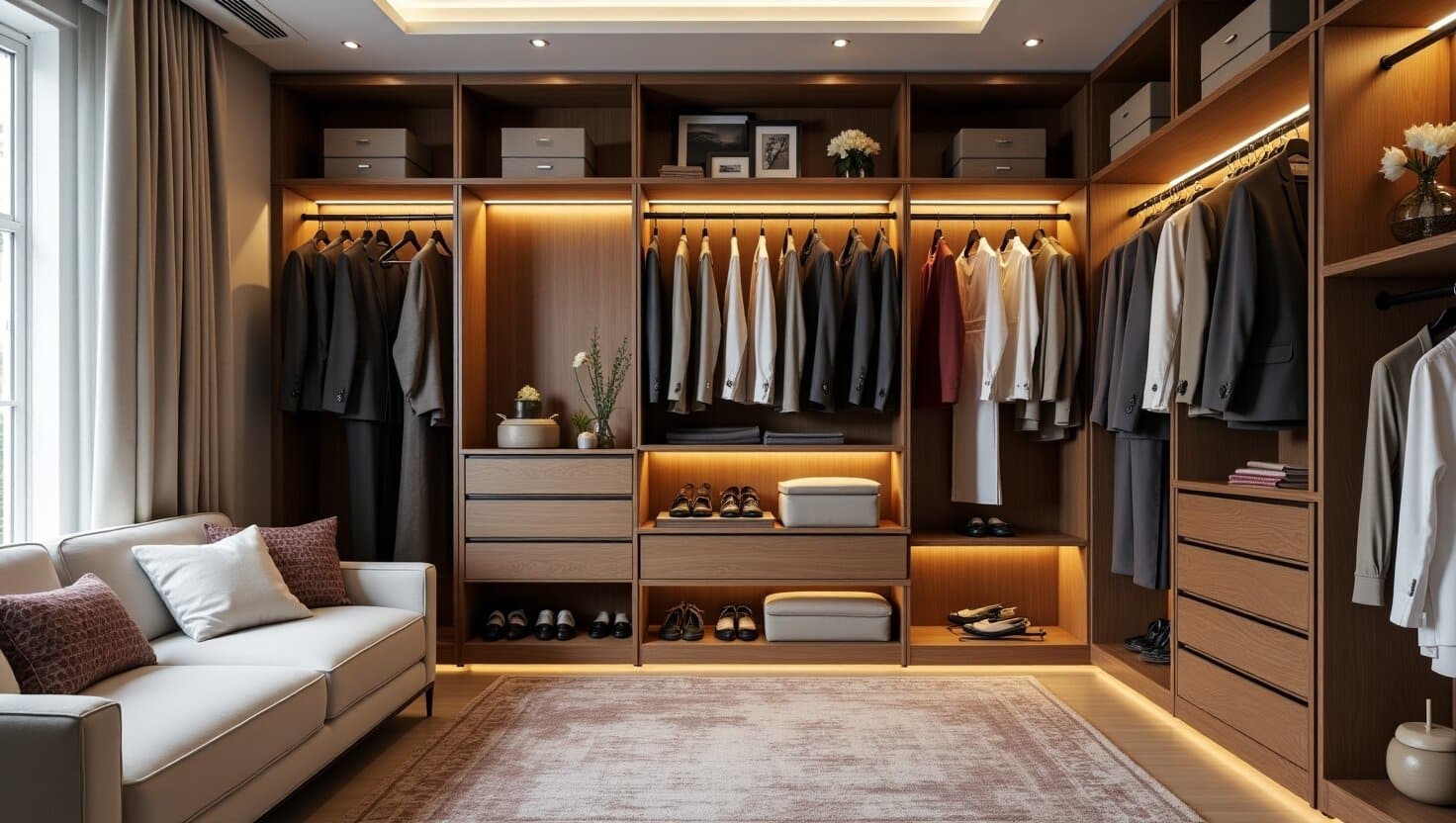
Precision First, Regrets Never
Precise measurement isn’t just the first step in creating a custom wardrobe; it’s the critical factor determining its success. Clear communication on your drawings can help prevent unnecessary rework or losses due to miscommunication. We suggest you don’t solely rely on vague data from others or original house blueprints. Instead, personally participating in or overseeing the measurement process will significantly boost your wardrobe’s fit and your satisfaction. If your home has complex spaces, walls with beams, columns, or irregular structures, it’s advisable to reach out to professionals for measurement assistance.
Looking for an experienced Chinese custom wardrobe manufacturer to bring your vision to life? Nexthome Furnishing specializes in providing high-quality custom wardrobes from China to homes worldwide. We offer a one-stop service from design to delivery, helping you confidently realize every custom dream.
Contact NextHome Now!
We are here to help you with your business needs. We have a team of experts who are always eager to help you.

